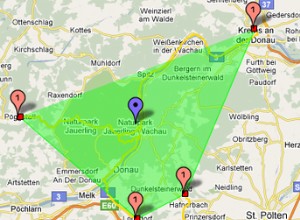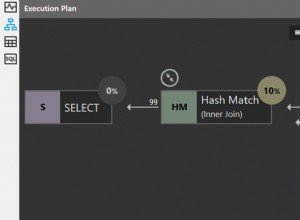Una forma de hacerlo es anidando su consulta y luego eligiendo la primera fila en la salida:
select C_SE_ID, cnt
from (select CS.C_SE_ID, count(*) as cnt
from COURSE_SECTION CS join
ENROLLMENT E
on CS.C_SE_ID=E.C_SE_ID join
LOCATION L
on CS.LOC_ID=L.LOC_ID
where L.BLDG_CODE='DBW'
GROUP BY CS.C_SE_ID
order by count(*) desc
) t
where rownum = 1
Tenga en cuenta que actualicé la sintaxis de unión a la versión más moderna usando on en lugar de where .
Si quieres todo valores mínimos (y hay más de uno), entonces usaría funciones analíticas. Es una idea muy similar a su consulta original:
select *
from (select CS.C_SE_ID, count(*) as cnt,
max(count(*)) over (partition by cs.c_se_id) as maxcnt
from COURSE_SECTION CS join
ENROLLMENT E
on CS.C_SE_ID=E.C_SE_ID join
LOCATION L
on CS.LOC_ID=L.LOC_ID
where L.BLDG_CODE='DBW'
GROUP BY CS.C_SE_ID
order by count(*) desc
) t
where cnt = maxcnt;
Pruebe esto en lugar de su consulta original:
SELECT E.S_ID
FROM ENROLLMENT E
where E.C_SE_ID in (select C_SE_ID
from (select CS.C_SE_ID, count(*) as cnt,
max(count(*)) over (partition by cs.c_se_id) as maxcnt
from ENROLLMENT E
LOCATION L
on CS.LOC_ID=L.LOC_ID
where L.BLDG_CODE='DBW'
GROUP BY e.C_SE_ID
) t
where cnt = maxcnt)
);
Además de arreglar las uniones, también eliminé todas las referencias a course_section . Esta tabla no parece usarse (a menos que sea para filtrar resultados), y eliminarla implica consultas.




